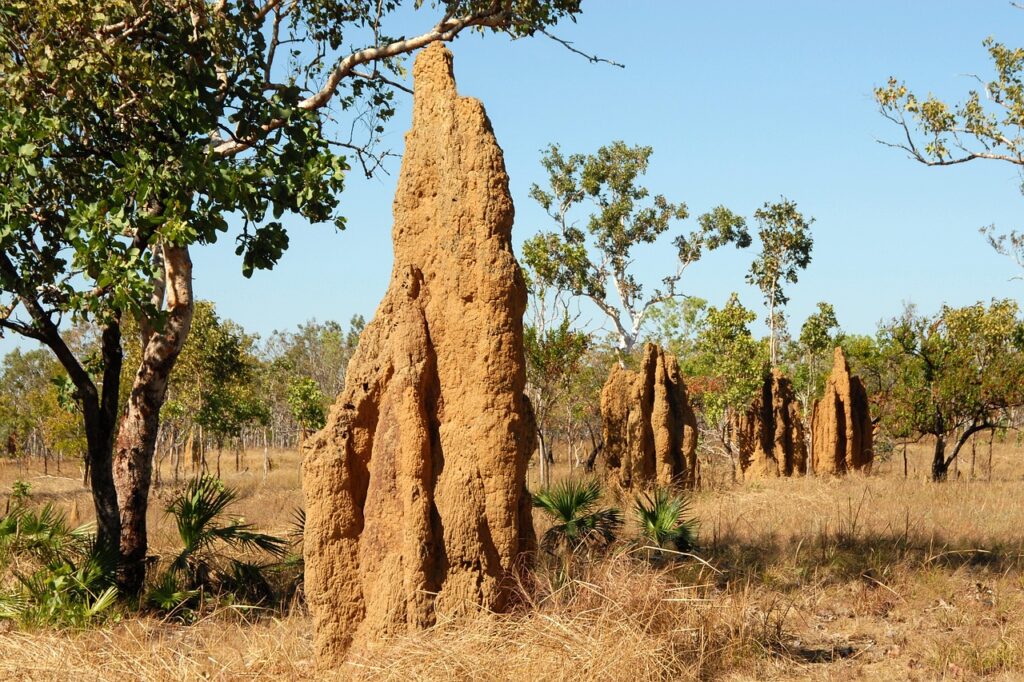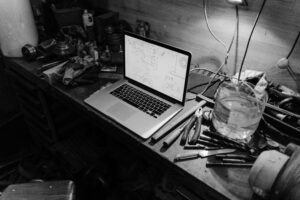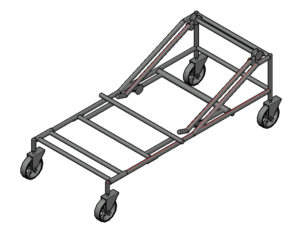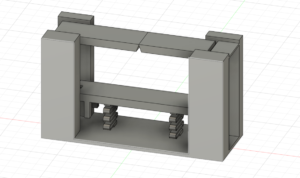Trying to come up with novel ideas in a professional setting is like trying to invent a new plotline for The Simpsons—almost everything feels like it’s been done before. You’re competing with a flood of existing thoughts and concepts, and just when you think you’ve struck the perfect balance of originality, usefulness, and practicality, you discover that someone else already had the same idea and documented it somewhere as ‘their idea’. This is the point where you have to accept that achieving novelty in the sense of being 100% original is rarely achievable.
In engineering and design, it’s common practice to draw inspiration from existing ideas, building upon them through iteration or respectfully borrowing them and incorporating them into your own work. When it comes to borrowing well-working ideas, where better to look than a source where these well functioning systems have spent millions of years iterating and refining themselves through evolution – nature.
The process of emulating nature’s time-tested strategies to solve human engineering challenges, referred to as biomimicry, is applied in a wide range of products, from simple to complex. Examples include Velcro, inspired by burrs that cling to fur; impact-resistant helmets modeled after the woodpecker’s shock-absorbing skull; and even telescopic camera functions influenced by the sharp vision of birds of prey. An often overlooked but widely used example of biomimicry impacting you right now indoors is the ventilation system in buildings, inspired by the natural airflow regulation found in termite mounds.
The Natural Passive Cooling Systems of Termite Mounds
Termite mounds are natural architectural marvels—among the tallest structures in nature—that maintain a stable internal environment despite extreme external heat. The African species Macrotermes, in particular, must survive in intensely hot climates. Yet its mounds remain cool inside throughout the day, even though they can reach heights of up to 8 meters and extend deep below the surface. Much like an iceberg reveals only its tip above water, a significant portion of the mound lies underground. To regulate temperature within this vast and complex structure, the termites employ a combination of passive cooling techniques, each utilizing different physical principles to create a consistent cooling effect. While there may be more subtle techniques at play, we will go over some of the more profound examples.
Porus ‘breathable’ walls and convection
The surface of a termite mound is dotted with numerous small holes, most of which serve as entrances to a network of narrow interconnected tunnels. These tunnels converge toward the center of the mound, where a large central chimney or ventilation shaft runs vertically through its core. These tunnels operate as ventilation shafts through the entirety of the mound. As the interior of the mound heats up, the warm air rises and escapes through the central chimney or other openings near the top. This upward movement of air reduces the internal pressure, drawing in cooler air through the bottom shafts of the ventilation system. The result is a continuous airflow driven by the natural behavior of hot and cold air, which helps maintain a steady circulation throughout the mound. The specifics of the ventilation throughout the mound is directed by the queen, which gives the colony commands on which vents should be opened or closed at any given point to regulate the internal temperature.
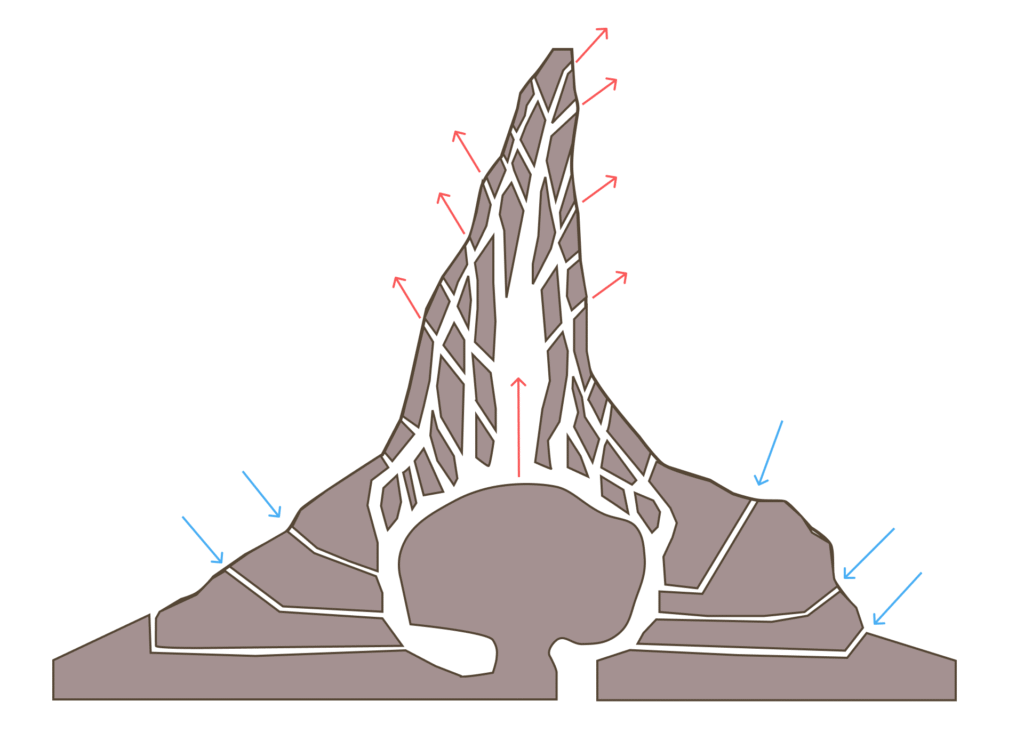
In particularly hot climates, termites enhance this convection effect by extending the central shaft/chimney deep into the ground, stopping just above the water table. From there, the shaft bends and runs horizontally just above the water table, stretching some distance away from the mound. It then curves upward again, rising vertically until it emerges at the surface. There are even sometimes two of these vents for one mound located on opposite sides of it, which in turn is directed by the queen to have them opened or closed depending on the temperature. When they are opened, the same convection affect of replacing hot air with cooler air take place but as a more enhanced affect.
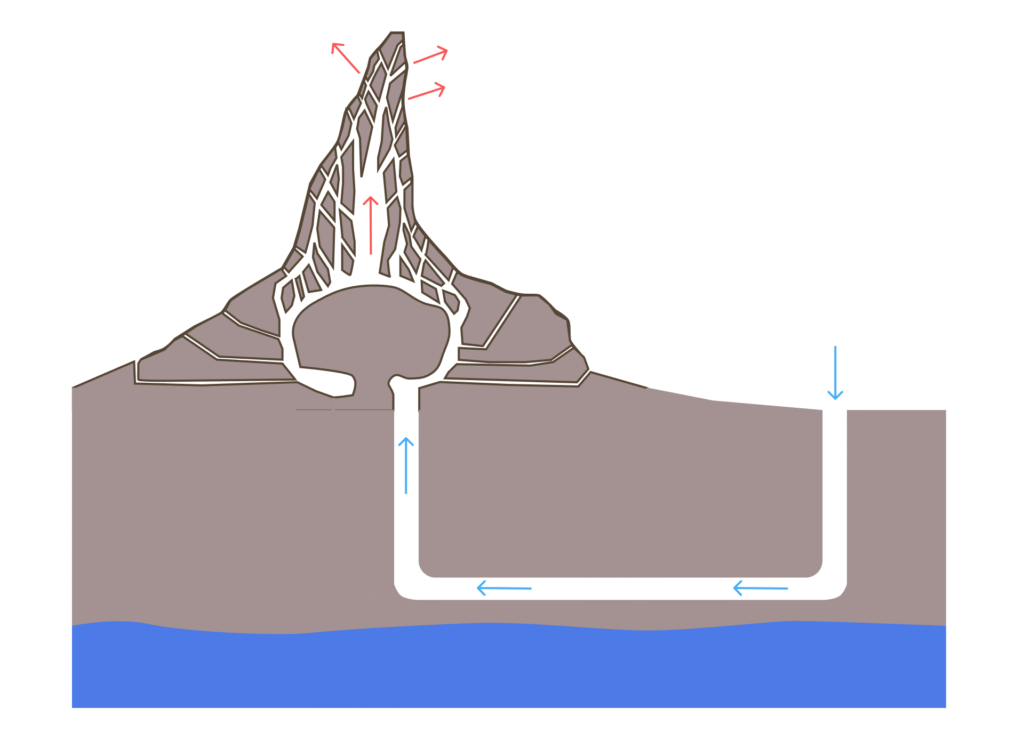
Additionally, the termites can be directed to bring water up from the submerged water table and apply it to the lower openings where cooler air enters to enhance the affect of cooling down the air.
Maintaining Humidity
Humidity is another tool termites use to regulate temperature. As water absorbs heat to evaporate, it transitions into vapor and escapes the mound along with the rising warm air. To maintain a consistent humidity in the mound the termites cultivate a farm of fungi species called Termitomyces, which they grow in designated chambers called fungus combs. The fungi provide several benefits for the termites, such as breaking down plant matter for them to ingest, and even being used as a food source themselves. When fungi breaks down this plant matter, they produce water and water vapor as part of their metabolic byproducts.
Structural Shape and Cardinal Positioning
Most termite mounds share a consistent overall shape: they are slim and elongated, with tapered ends pointing north and south, and broader sides facing east and west. This specific orientation helps minimize direct sun exposure throughout the day. In the morning and evening, the Sun’s gentler rays strike the wider east- and west-facing sides. However, during the intense midday heat, when the Sun is directly overhead, the mound’s narrow upper profile reduces the surface area exposed to direct sunlight, helping to limit heat absorption. This is a clever method in reducing sun exposure by using simple structural geometry.
How Humans have used the Inspiration in Architecture
Humans have adopted some of the passive cooling techniques used by termites in their mounds—some as direct inspirations, while others serve as loose guides to help engineers develop effective solutions. To better illustrate these principles, let’s examine a few specific examples from well-known buildings and highlight where these concepts have been applied.
East Gate Center of Harare, Zimbabew
This is a well-known example in which architect Mick Pearce explicitly cited termite mound construction as the inspiration for the building’s structural design, intended to maintain a comfortable indoor temperature without the use of air conditioning. This is a significant challenge, especially given South Africa’s average daytime temperatures of around 30°C, but it becomes achievable by incorporating multiple design strategies. One of the most effective methods used is convection cooling. Much like termite mounds, the Eastgate Centre’s internal structure is designed to promote natural ventilation by allowing hot air to rise and escape from the top, while drawing in cooler air from below. At the base of the building, a horizontal duct equipped with intake fans pulls in cool outside air. This air is channeled through ducts that connect to openings at the bottom of each floor. As the cool air enters each level, convection occurs: cooler air flows in from the bottom, while warmer air rises and exits through vents located at the top of each floor. The hot air is then funneled into a large central chimney that runs through the core of the building and releases it through an opening at the top.
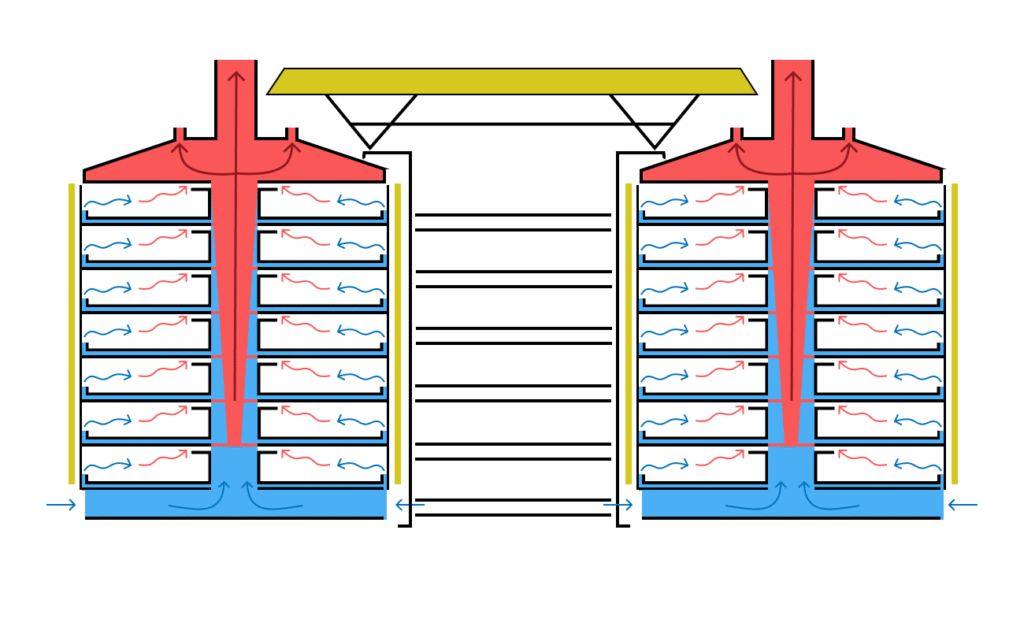
While the act of convection is a direct technique borrowed from termites, some more subtle techniques have been borrowed as well, such as implementing building shapes to minimise heat absorption into the building envelope itself. The buildings surface is comprised of many protruding rectangular shapes that increase the surface area of the building, reducing the buildings ability to retain heat and improves the process of shedding excess heat at night, working similarly to a heat sink. While the shape of a termite mound reduces heat absorption in a different matter, simply utilizing clever shapes does give a beneficial boost to keeping interiors cool for both structures.
The Pearl Academy in Jaipur, India
Recognized as a benchmark in passive cooling architecture, the Pearl Academy in Jaipur, India, utilizes a range of innovative techniques to naturally regulate indoor temperatures. Among these are Jali screens (perforated stone panels) that diffuse sunlight and allow airflow, as well as a distinctive roofing system made of hollow clay pots that enhance thermal insulation. A central courtyard and pool play a pivotal role in the building’s climate control. As the interior heats up, water from the central pool begins to evaporate—a process that absorbs heat from the surrounding air due to the energy required for the phase change from liquid to vapor. This rising warm vapor carries heat upward and away from the building, while cooler air is simultaneously drawn in through side openings, creating a continuous convection cycle. This system effectively disperses heat from both the pool and surrounding spaces. While it may not be directly modeled after termite mounds, the cooling strategy shares key similarities, particularly in its use of convection and humidity regulation. Termite mounds, for example, employ fungal colonies to manage internal humidity, mirroring the Pearl Academy’s use of evaporative cooling and controlled airflow to maintain a stable microclimate.
Furthering the Inspiration in New Ways
While we’ve explored various features of termite mounds that can inform modern cooling strategies, what possibilities might emerge if future buildings drew even deeper inspiration from these ingenious insect homes? Following a 2023 paper and study called “Termite-inspired metamaterials for flow-active building envelopes” conducted by David Andreen and Rupert Soar, the findings proved that termite mounds still have some passive cooling secrets for humans to discover. The article initiates a study on the performative potential of reticulated tunnel networks, examining how termite tunnels function as mechanisms for directing selective airflow—an approach that could be adapted to enable semi-passive climate regulation within a building envelope. Essentially, a phenomenon known as ‘oscillating airflow’ occurs when wind blows up against the surface of a termite mound. This interaction of transient air movements generates a useful and controllable exchange of mass (as air) from the inside of the mound to the outside of the mound, and vice versa.
Throughout the study, in testing if a porous shaped object can influence mass transfer between two mediums, two separate experimental approaches testing three different types of porous objects, or egress complexes referred to as geometries A, B and C, were set up for testing the concept. In the first, an oscillating air column was directed across the an egress complex, with a tracer gas and sensor system used to measure the rate of mass transfer. The second experiment utilized a two-dimensional model of the egress complex to simulate airflow patterns, substituting air with oscillating water across the network. Fluorescent dye and video recording were used to visualize the resulting flow patterns, enabling analysis through both static images and video footage. The following images are from the paper itself to help in visualizing how the experiments were set up.

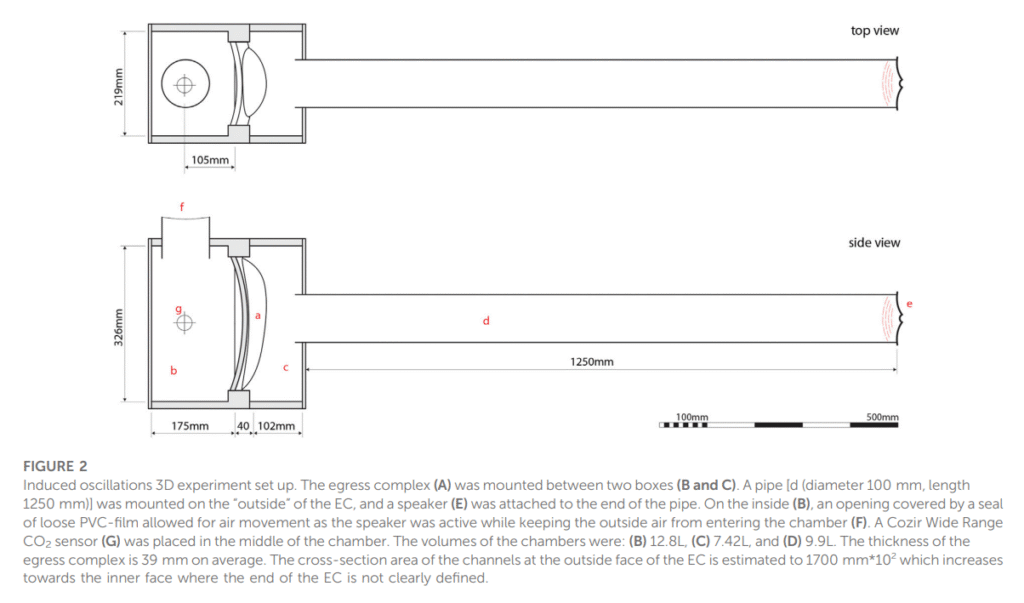
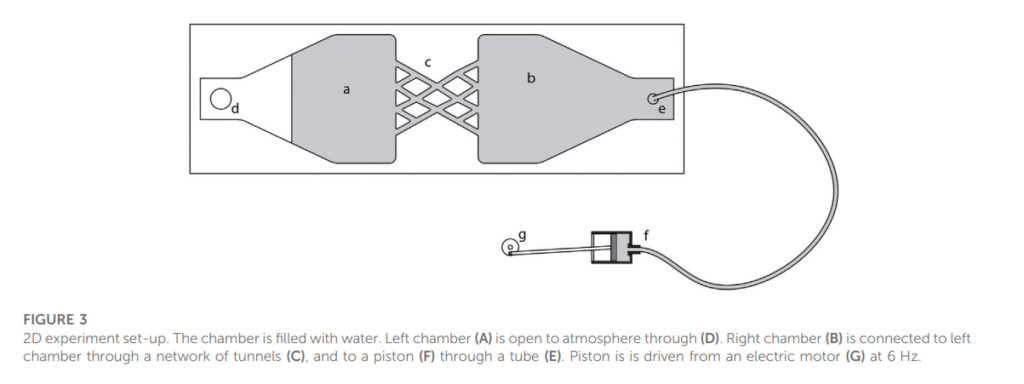
During the completion of each set of tests, a wide range of frequencies and amplitudes was examined. The results suggest that the mass transfer rate is relatively high, reaching a maximum around the 40 Hz frequency range. Additionally, higher amplitude levels tend to enhance the mass transfer rate. These conditions are somewhat comparable to the turbulent wind patterns observed around the surfaces of termite mounds. While the effects of frequency and amplitude were similar in the geometries labeled A and C (reticulated shaped channels), the impact on mass transfer differed when using geometry B (straight channels). Geometry B overall appeared to have a much lower mass transfer or no significant change in transfer dependent on it’s shape throughout it’s series of testing.
The overall results of the testing suggest that a reticulated-shaped geometry—similar to those found in termite mounds—significantly enhances the rate of mass exchange compared to geometries with straight pathways between two mediums. In the context of passive cooling, this enables more effective exchange of internal hot air with cooler external air. While the paper notes that further research is needed to fully validate this principle, the potential applications in future building design are both promising and exciting.
One possible application could involve integrating this geometry into building envelopes, combined with electronically controlled oscillators that interact with the static structure. This system could enable selective, situation-dependent transfer of heat and humidity across different zones within the building. For instance, if one side of the building experiences increased heat gain, oscillators on that side could be activated to promote localized airflow and reduce the temperature. This possible approach could allow for targeted, efficient cooling throughout the building.
When design concepts are inspired by nature to address existing challenges, there’s always the possibility that underlying principles—yet to be fully understood—are at work, offering further potential for insight and innovation drawn from biological systems.
Conclusion
Many future engineering challenges could be addressed by studying how nature and evolution have solved similar problems. While some existing designs have already taken inspiration from the natural world, there are still countless secrets to uncover—even in areas we’ve previously explored. This shows that drawing from nature not only sparks innovative ideas but also opens new paths for advancing engineering techniques an design solutions. If you have enjoyed this content fell free to comment and start the conversation!
